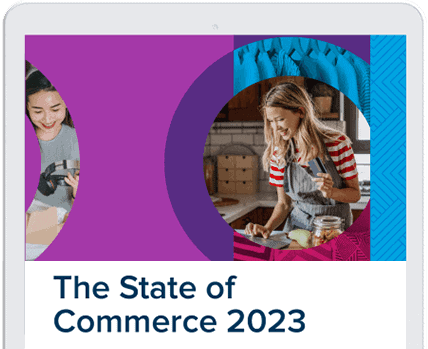If you want to sell online today, you better give it everything you’ve got. Between short attention spans, low patience levels and the allure of competitor websites, the modern customer can find any reason to bounce from your website if the buying experience is not up to par.
In the current competitive shopping climate, having a solid purchase experience is the difference between success and failure.
According to research from the Baymard Institute, nearly 70% of shoppers abandon their carts. That means that your business needs to create a seamless, customer-centric purchase experience to drive sales, maximize revenue and succeed online.
In this article, we highlight what’s needed to create that sort of experience and share ways for you to reduce friction while making it easy for customers to buy.
What causes purchase friction?
Friction occurs when something disrupts the customer’s flow and discourages or distracts them from completing their purchase. Obstacles can include lengthy checkout processes, unexpected costs and fees, lack of preferred payment options and slow (or nonexistent) estimated delivery times. Purchase friction can frustrate customers and hurt their perception of your business, which not only hurts sales but also hinders your ability to build customer loyalty.
Creating a friction-free buying experience
Purchase friction can happen anywhere along a customer’s buying excursion. Your purchase experience should be optimized to quickly guide customers from the shopping stage to the checkout stage. To create a friction-free purchase experience and keep customers moving through the checkout process, you need to provide convenience, ease of use, trust and flexibility. Here are seven tips for how to do just that:
1. Remove all obstacles from checkout
A clunky checkout experience can quickly undo all the hard work your website has put into convincing shoppers to choose your products. A checkout experience that is overly complicated or a lengthy buying process that involves too many forms, clicks and intrusive pop-ups can frustrate and confuse otherwise committed shoppers. Streamline your purchase experience by cutting down the number of steps and pages and make the process as organized, intuitive and simple as possible.
2. Provide shipping transparency
Customers want to know the exact shipping costs that they can expect with their order…and how long they’ll have to wait to receive it. Higher than expected shipping costs and/or lack of information around delivery can discourage a customer from committing to their purchase.
Close more sales on your website by providing delivery estimates and offering multiple shipping options and timeframes for high-intent buyers. Support this onsite flexibility and transparency with tight integration between your ecommerce platform, fulfillment strategy and your back-end systems.
3. Be upfront with fees and costs
Another major point of friction for many online shoppers is seeing unexpected fees and costs during the checkout process. Customers don’t like to feel as if they’re unfairly charged, especially if they are nearing the completion of their purchase. To reduce this friction, you’ll want to communicate all fees, surcharges and taxes to customers as early in the purchase experience as possible. Consider using real-time shipping and tax calculators before final checkout to eliminate surprises.
4. Provide flexible payment options
When shopping online, customers like the flexibility and convenience of using their preferred payment method. Whether it’s a credit card, a third-party payment system like PayPal, or installment plans, you’ll want to provide multiple payment methods for customers to easily make their purchase. Sellers that can diversify their payment methods will be better equipped to drive conversions and even encourage return purchases.
5. Incentivize the purchase
Bargain-savvy shoppers often abandon their cart if they think that they can get a better deal from your competitors—unless you give them a reason not to. Consider offering coupons, free shipping specials, volume discounts and add-on offers right in the cart to encourage conversion and assure customers that they are getting the most value.
6. Don’t slow down order confirmation
Time-consuming manual reviews to protect the enterprise from fraud can leave consumers wondering whether their orders were received and processed. Consider automating your order flow and fraud review so you can instantly confirm an order has been processed and is moving along. Such systems also greatly reduce the possibility of falsely declining a good order. No consumer wants to be informed that the item they just ordered is not going to be coming.
7. Bonus tip: solidify the post-purchase experience
Customer friction doesn’t occur only when a purchase is made. Your post-purchase experience can be just as critical as the purchase itself. Any challenges during post-purchase—from shipping and fulfillment to delivery and returns—can damage a customer’s perception of your brand and remove any desire for them to come back to your business to make further purchases.
To create a solid post-purchase experience, you’ll want to provide real-time order status information, clear updates, and up-to-date information. You’ll also want to create a reasonable return policy that makes it easy for customers to initiate a return. A friction-free post-purchase experience will make customers feel more confident about purchasing from you in the future.
Eliminate purchase friction to maximize your results
If you’re looking to scale your business, removing purchase friction should be an important part of your online strategy. By making it easy for customers to buy, you will not only increase conversions but also be in a better position to build long-term relationships with them.
Photo by Getty Images











